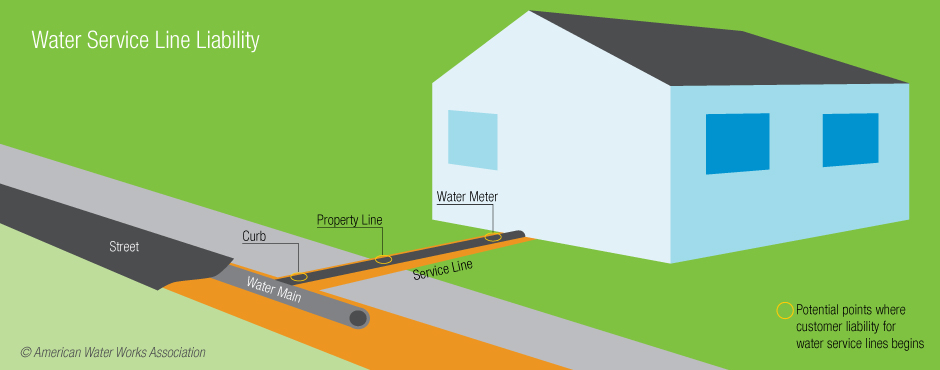In most cases, the water provider owns, operates, maintains and repairs all the large pipelines that are buried beneath streets or open spaces. Exactly where these water pipelines become your responsibility depends on your water provider. In some cases, a property owner's responsibility begins at the point of connection; in other cases, it starts at the water meter or the property line. Almost invariably, however, your liability extends into and throughout your home. The image below outlines the potential points at which you may be required to take responsibility for your home’s service line. This distinction will become important if the service line breaks or your utility is doing line replacements of any kind – then it will be critical to understand your obligation for pipeline maintenance. Get a head start: contact your water provider to educate yourself before it becomes an issue.
